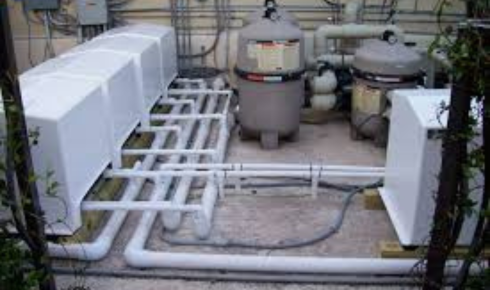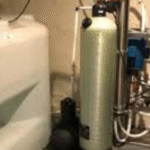There’s something fascinating about knowing that right beneath your feet, there’s a steady source of clean, renewable energy waiting to be used. The ground stays at a relatively constant temperature year-round, and geothermal systems tap into that natural balance to heat and cool our homes. It’s one of those quiet innovations that don’t get nearly enough attention. No big flames, no noise, no clouds of exhaust—just the Earth doing what it does best: providing stability.
But like all good things, even the most efficient geothermal system needs a bit of care. Sure, it’s one of the most durable and low-maintenance heating and cooling options out there, but “low-maintenance” doesn’t mean “no maintenance.” Ignoring it completely? That’s a recipe for inefficiency. That’s why geothermal maintenance is so important—not just for keeping your system running, but for protecting the investment you’ve made beneath your lawn.
A System That Works With the Earth
Let’s talk basics for a second. A geothermal heating and cooling system doesn’t create heat—it moves it. In the winter, it draws warmth from the ground and pushes it into your home. In the summer, it reverses the process, transferring heat from inside your home back into the earth.
This constant loop makes it incredibly efficient—up to four times more efficient than traditional systems. But the magic lies in how all the pieces work together: the underground loop, the heat pump, and the distribution system inside your house. When one of those components starts to lag, the efficiency domino effect begins.
The beauty is, most of these systems can run quietly for decades with minimal interference. Still, over time, dirt builds up, fluids degrade, or tiny leaks in the loop system can reduce performance. Think of it like a car—it might run for years, but if you never change the oil or check the tires, you’ll eventually hit trouble.
The Overlooked Importance of Regular Servicing
It’s easy to forget about a geothermal system. It’s buried underground, it doesn’t make a fuss, and it rarely gives off warning signs like a noisy furnace might. But that’s also why people tend to overlook it—until something goes wrong.
That’s where geothermal system servicing comes into play. A trained technician knows how to spot the subtle signs of wear and tear that most homeowners would miss. They’ll check the fluid levels, test pressure, inspect the loop system for leaks, and ensure the heat pump is operating at peak efficiency.
If you think about it, that’s a pretty small effort compared to the payoff. A one-hour service call can extend the lifespan of your system by years, keep your energy bills low, and prevent a small issue from turning into an expensive headache.
And here’s the kicker: because geothermal systems don’t rely on combustion or outside air exchange, they’re less prone to dramatic failures. Problems creep in slowly. That makes regular checkups even more important. It’s about catching those little inefficiencies before they become major performance drains.
What Technicians Actually Do During Maintenance
For those who like to know what’s happening behind the scenes (and let’s be honest, curiosity gets the best of us sometimes), here’s what a professional checkup usually includes:
- Inspecting the loop field for proper flow rate and pressure. This ensures the underground piping network is circulating correctly and efficiently.
- Checking refrigerant levels within the heat pump unit. Too little or too much refrigerant can throw off balance and efficiency.
- Testing system controls and sensors to ensure smooth operation.
- Cleaning the heat exchanger—because even a small layer of buildup can reduce performance significantly.
- Flushing and refilling the loop system when necessary, to maintain fluid quality and consistency.
It’s not flashy work, but it’s essential. And the peace of mind that comes from knowing your system is running clean and efficient? Worth every bit of it.
The Efficiency Factor: Saving Energy and Money
One of the best parts of geothermal systems is how predictable they are. While traditional HVAC systems strain harder during extreme temperatures, geothermal systems stay steady, using the earth’s constant underground temperature as their anchor. But even a small decline in efficiency can add up to big losses over time.
If the system isn’t transferring heat efficiently—say, due to a dirty coil or a sluggish pump—it’ll run longer to achieve the same comfort level. That means higher utility bills and unnecessary wear. Regular tune-ups not only help maintain peak performance but can also prevent unexpected spikes in energy use.
And since many homeowners invest in geothermal systems for environmental reasons, keeping them efficient isn’t just about saving money—it’s about staying true to that sustainability mindset.
Why Preventive Care Matters More Than Emergency Fixes
No one wants to be caught off guard with a heating or cooling issue, especially when the whole point of going geothermal is reliability. That’s why staying proactive makes sense. Preventive care costs far less than emergency repairs, and you’re not stuck waiting for parts in the dead of winter or during a summer heatwave.
Professional maintenance schedules typically recommend annual or semi-annual visits. And depending on your system’s age and usage, that’s usually enough to keep it in great shape. Some homeowners even sign up for maintenance plans, so they don’t have to think about scheduling—it just happens automatically.
That’s the thing about geothermal: it rewards consistency. The more you nurture it, the better it performs, the longer it lasts, and the more you get out of your investment.
The Long Game: Lifespan and Reliability
Here’s what surprises most people—geothermal systems can last up to 25 years for the heat pump and over 50 years for the underground loop. That’s double or triple the lifespan of a typical furnace or air conditioner.
But that longevity depends heavily on one thing: care. Regular geothermal heat pump maintenance keeps everything balanced, preventing premature wear on motors, compressors, and electrical components.
It’s not just about the parts, though. Proper maintenance preserves the system’s design efficiency, meaning the energy savings you were promised when it was installed stay consistent year after year. Neglect it, and that efficiency slowly erodes, quietly nibbling away at your return on investment.
So, in a way, geothermal maintenance isn’t an expense—it’s an insurance policy for comfort, performance, and longevity.
Common Misconceptions About Maintenance
One of the biggest myths out there is that geothermal systems are “maintenance-free.” It’s easy to see why—there’s no noisy furnace, no outdoor condenser fan, and fewer moving parts overall. But while the system is simpler, it still relies on circulation, fluid balance, and heat exchange—all things that can degrade over time.
Another misconception is that only “something’s wrong” when you see visible issues. With geothermal, inefficiency can sneak up gradually. Your bills go up, your home feels slightly less comfortable, but because it’s so quiet, you don’t realize the system’s struggling.
Maintenance solves that. It keeps your comfort steady and your costs predictable.
Wrapping It Up: The Earth Keeps Giving—So Give Back
Geothermal energy is one of those marvels that make you appreciate how elegantly nature works. It’s clean, renewable, and constant—a gift from the planet that just keeps giving. But like any relationship, it thrives on a bit of attention.
A well-maintained geothermal system isn’t just efficient—it’s dependable. It quietly works behind the scenes, keeping your space comfortable through every season. And with just a little care, it’ll keep doing that for decades to come.
So, the next time you’re tempted to skip that tune-up, remember: what’s happening underground matters more than you might think. Treat your geothermal system well, and it’ll return the favor—with comfort, savings, and sustainability that run deep.



